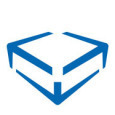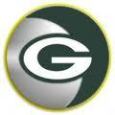Replication Share
Hi.
I am trying to get the replication share working. I have the requirements already set up: computer added to inventory, label for the computer, a shared folder on the remote server with read/write permissions so items can be copied and/or installed as needed.
Not seeing how the user would authenticate to the share for uploading the patches. For example the user will show as being a local user instead of a domain user:
UNC: smb://administrator:@someserver/Updates
Is there anyway to specify a domain user in the configuration?
Thanks for any and all responses.
--james
I am trying to get the replication share working. I have the requirements already set up: computer added to inventory, label for the computer, a shared folder on the remote server with read/write permissions so items can be copied and/or installed as needed.
Not seeing how the user would authenticate to the share for uploading the patches. For example the user will show as being a local user instead of a domain user:
UNC: smb://administrator:@someserver/Updates
Is there anyway to specify a domain user in the configuration?
Thanks for any and all responses.
--james
0 Comments
[ + ] Show comments
Answers (8)
Please log in to answer
Posted by:
airwolf
12 years ago
Posted by:
nshah
12 years ago
Posted by:
mac456
12 years ago
Posted by:
cmccracken
13 years ago
Posted by:
jbowes
13 years ago
Posted by:
cmccracken
13 years ago
Hey James,
As I understand it, the destination path is were the KBOX pushes the patches. The download path is where the clients/agents go to retrieve their patches.
In my case, I have a 1TB NAS box at each of our remote sites. Each one has a shared folder called KBOX (ex. \\safiler02\KBOX). For both the destination and download paths, I specify \\safiler02\KBOX and provide a user with rights on that folder (in my case it is a local user because of the limits of the NAS box, but domain should be the same).
Each agent that has the associated label will then download their patches (and MIs, etc) from that replication share.
Picture also included.
Casey

As I understand it, the destination path is were the KBOX pushes the patches. The download path is where the clients/agents go to retrieve their patches.
In my case, I have a 1TB NAS box at each of our remote sites. Each one has a shared folder called KBOX (ex. \\safiler02\KBOX). For both the destination and download paths, I specify \\safiler02\KBOX and provide a user with rights on that folder (in my case it is a local user because of the limits of the NAS box, but domain should be the same).
Each agent that has the associated label will then download their patches (and MIs, etc) from that replication share.
Picture also included.
Casey

Posted by:
GillySpy
13 years ago
It's all relative to the agents. The KBOX never talks directly to the file store. The agent that copies the files to the destination is the replication machine. From the perspective of the replication PC what is the destination? Is it a local drive (ie. drive letter) or a unc path? If writing to a network location you must use an account that can write to this location.
The agents that need the files copying them via smb from the download path. This path has to be meaningful to all agents.
A "user" never logs in and download the files from the file store. The agent on the PCs runs as system account so the needs both a path meaningful to them and a username / creds with rights to get them. This can be read-only permissions
The agents that need the files copying them via smb from the download path. This path has to be meaningful to all agents.
A "user" never logs in and download the files from the file store. The agent on the PCs runs as system account so the needs both a path meaningful to them and a username / creds with rights to get them. This can be read-only permissions
 Rating comments in this legacy AppDeploy message board thread won't reorder them,
Rating comments in this legacy AppDeploy message board thread won't reorder them,so that the conversation will remain readable.






